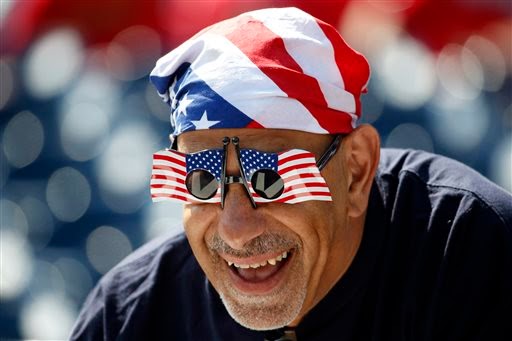.jpg) |
| Giving away outs on the basepaths: Sam Fuld is picked off first base by Danny Duffy in the fourth inning. |
The moment Brian Dozier took off I was yelling "No no no" at the TV set, and Scott Ullger should have doing the same, because it's possible Dozier could actually hear him. And then I remember the story from the 1975 World Series of Don Zimmer, third base coach for the Red Sox, yelling "No no no" and Denny Doyle hearing it as "Go go go."
Meanwhile, another day slips off the calendar toward the nonwaiver trading deadline, and still no action involving the Twins. I do believe something is going to happen before the deadline this afternoon. But I suspect it won't involve Kurt Suzuki or Josh Willingham. Maybe Kevin Correia (teams are always looking for pitching, although Correia is not a playoff-caliber starter). Most likely, one of the middle relievers -- Brian Duensing, Jared Burton and/or Casey Fien.
But I have a lousy record on guessing trade deadline stuff. Terry Ryan has done deadline deals, but most years he waits until August and the waiver period. That's when Justin Morneau moved last year. So while I expect something to happen today, I recognize that it might not -- and just because it didn't happen in July doesn't mean it won't happen in August.
A few other items:
- The word from the New Britain Rock Cats about J.O. Berrios: He's fine. No discomfort today. Nothing to see here. Alrighty then. Let's see when he starts next, and what happens when he does. I hope that's accurate.
- Hudson Boyd, a high draft pick in 2011 who hasn't risen above Low A ball and has been relegated to relief work in Cedar Rapids, was suspended indefinitely for unspecified violation of team rules. The Twins had four picks by the end of the second round of that draft: Levi Michael, Boyd, Travis Harrison and Madison Boer. I'm not very optimistic about any of them at this point.
- I've been known, in years past, to hit Davenport, Iowa, to see a Midwest League game (home team: Quad Cities River Bandits). On Wednesday night, their game was interrupted when a possum invaded:
The @QCRiverBandits' game was briefly delayed today when an opossum took the field. Seriously. Photo: @QCBanditPhotog pic.twitter.com/rBlgFnZ8ih
— MiLB.com (@MiLB) July 31, 2014
That might have been more exciting to see than watching the Twins' base running tomfoolery.












.jpg)




.jpg)







.jpg)



